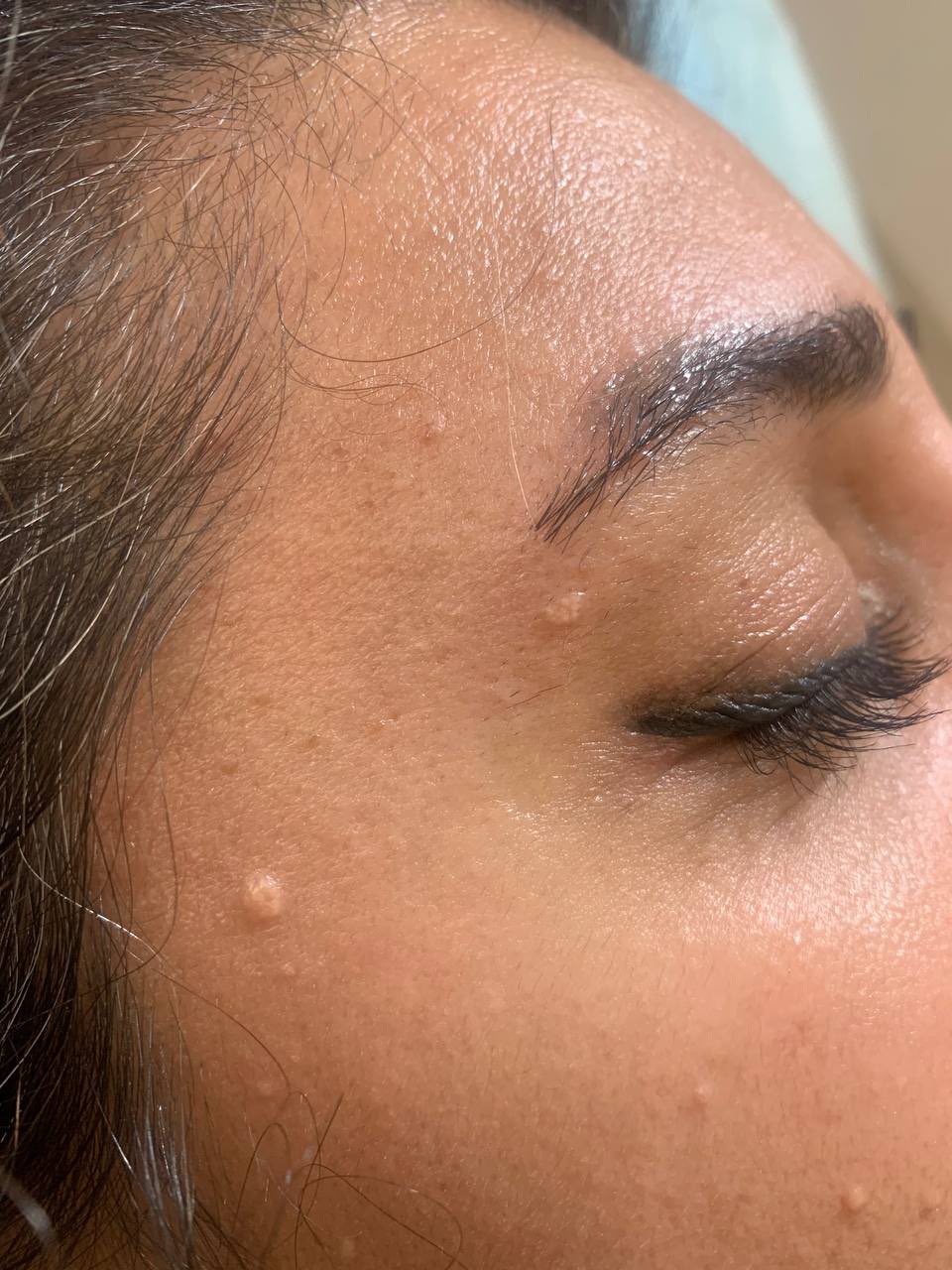Makindo Medical Notes"One small step for man, one large step for Makindo" |
|
|---|---|
| Download all this content in the Apps now Android App and Apple iPhone/Pad App | |
| MEDICAL DISCLAIMER: The contents are under continuing development and improvements and despite all efforts may contain errors of omission or fact. This is not to be used for the assessment, diagnosis, or management of patients. It should not be regarded as medical advice by healthcare workers or laypeople. It is for educational purposes only. Please adhere to your local protocols. Use the BNF for drug information. If you are unwell please seek urgent healthcare advice. If you do not accept this then please do not use the website. Makindo Ltd. |
Molluscum contagiosum
-
| About | Anaesthetics and Critical Care | Anatomy | Biochemistry | Cardiology | Clinical Cases | CompSci | Crib | Dermatology | Differentials | Drugs | ENT | Electrocardiogram | Embryology | Emergency Medicine | Endocrinology | Ethics | Foundation Doctors | Gastroenterology | General Information | General Practice | Genetics | Geriatric Medicine | Guidelines | Haematology | Hepatology | Immunology | Infectious Diseases | Infographic | Investigations | Lists | Microbiology | Miscellaneous | Nephrology | Neuroanatomy | Neurology | Nutrition | OSCE | Obstetrics Gynaecology | Oncology | Ophthalmology | Oral Medicine and Dentistry | Paediatrics | Palliative | Pathology | Pharmacology | Physiology | Procedures | Psychiatry | Radiology | Respiratory | Resuscitation | Rheumatology | Statistics and Research | Stroke | Surgery | Toxicology | Trauma and Orthopaedics | Twitter | Urology
Related Subjects: |Nikolsky's sign |Koebner phenomenon |Erythema Multiforme |Pyoderma gangrenosum |Erythema Nodosum |Dermatitis Herpetiformis |Lichen Planus |Acanthosis Nigricans |Acne Rosacea |Acne Vulgaris |Alopecia |Vitiligo |Urticaria |Basal Cell Carcinoma |Malignant Melanoma |Squamous Cell Carcinoma |Mycosis Fungoides (Sezary Syndrome) |Xeroderma pigmentosum |Bullous Pemphigoid |Pemphigus Vulgaris |Seborrheic Dermatitis |Pityriasis/Tinea versicolor infections |Pityriasis rosea |Scabies |Dermatomyositis |Toxic Epidermal Necrolysis |Stevens-Johnson Syndrome |Atopic Eczema/Atopic Dermatitis |Psoriasis
🦠 Molluscum contagiosum is a common, highly contagious viral skin infection caused by a DNA poxvirus. 👶 Most often affects children & young adults, presenting with small, pearly papules with central umbilication. ✅ Harmless & self-limiting, but widespread/persistent cases may need treatment.
📖 About
- Definition: Viral infection with pearly papules + central dimple.
- Etiology: Caused by molluscum contagiosum virus (MCV), a member of the Poxviridae family.
- Epidemiology: Common in children, immunocompromised patients, and sexually active adults.
- Transmission: Direct contact, fomites (towels, clothes), and sexual contact in adults.
📌 Lesions are most often seen on the trunk, limbs, and in adults → genital area.
🩺 Clinical Features
- ✨ Lesion: Small, pearly papule with central umbilication.
- 📏 Size: 2–6 mm, may enlarge to 10–20 mm.
- 📍 Distribution: Trunk, limbs, face (children), genitalia (adults).
- ➰ Koebner phenomenon: Lesions may appear at trauma sites.
- 😣 Mild–moderate pruritus (↑ with atopic dermatitis).
- 🧾 No systemic symptoms; widespread lesions in adults → consider HIV testing.
- 🧴 Associated with atopic eczema → more extensive disease.
👁️ Clinical Signs

🔎 Investigations
- 🧑⚕️ Clinical diagnosis usually sufficient.
- 🔬 Skin biopsy if atypical (to rule out psoriasis/eczema).
- 🧫 KOH test if fungal infection suspected.
- 🧪 HIV test in adults with widespread disease.
🧾 Differential Diagnosis
- 🍄 Tinea corporis (ringworm) – scaly, ring-shaped, no umbilication.
- 🧪 Secondary syphilis – serological confirmation needed.
- 🌿 Eczema (Atopic dermatitis) – itchy, scaly, often chronic.
- ⭕ Granuloma annulare – ring-shaped, no umbilication.
💊 Management
- ⏳ Observation: Usually resolves spontaneously in 6–18 months.
- 😌 Symptomatic:
- Antihistamines for itch (loratadine, diphenhydramine).
- Topical steroids (e.g., hydrocortisone) + emollients for eczema/itch.
- ⚡ Local treatments:
- Cryotherapy (liquid nitrogen).
- Curettage (scraping lesions).
- Imiquimod (off-label, limited effect).
- Ophthalmology referral if eyelid lesions.
- 🌐 Systemic:
- HAART in HIV-positive patients often clears lesions.
- 🛡️ Prevention:
- Avoid sharing towels/clothing.
- Maintain good hygiene.
- Children do not need exclusion from school/swimming.
📉 Prognosis
- ✅ Self-limiting → clears in 6–18 months.
- 🙌 Complete recovery without scarring in most.
- 🎨 Post-inflammatory hyper/hypopigmentation possible (esp. in darker skin).
- 🔁 Recurrence rare (<3%).
📌 Conclusion
Molluscum contagiosum is a benign, self-limiting poxvirus infection. Treatment is not always necessary, but options exist to expedite clearance or reduce symptoms, especially in immunocompromised patients.